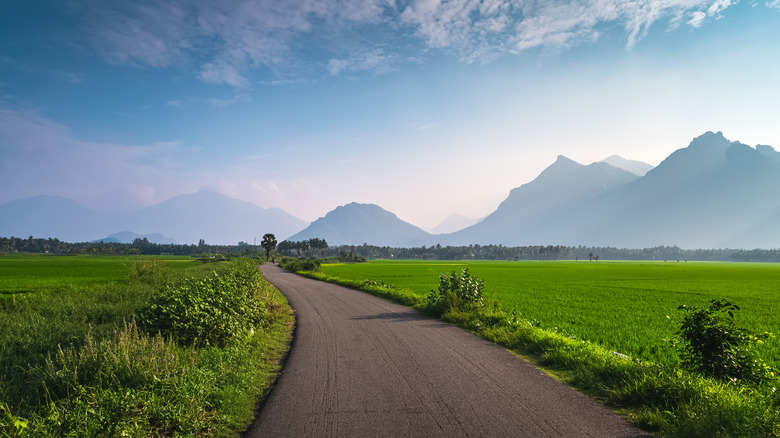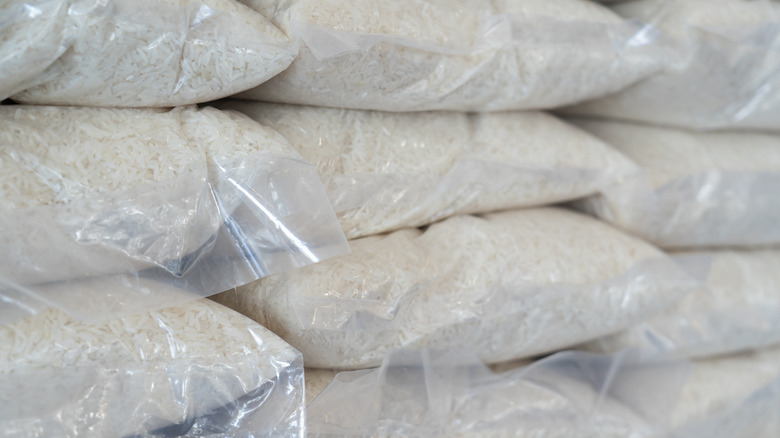How India's Droughts Could Affect Rice Across The Globe
Climate change has directly impacted the production of some of the world's most popular crops — from coffee beans to wine grapes (via New York Times) and now rice. Not long after the first shipment of Ukrainian grain left the country, signifying a breakthrough in the global food crisis, rain shortages in India are impacting the production of what is arguably the world's most important crop. As a staple food for more than half of the global population, The New Humanitarian says that the availability of rice is congruent with food security and political stability, particularly in the Eastern world.
In India, a country that provides 40% of the world's global rice supply to more than 100 different countries (via Bloomberg), farmers depend on the summer monsoon season. According to The Washington Post, temperatures ordinarily cool during the late spring as winds bring in moisture, leading up to the monsoon season. In the four months between then and September, India receives nearly 70% of its annual rainfall (via Reuters), but last month, India received its lowest recorded rainfall in more than 120 years, kicking off the season with 44% less rain than usual (via Down to Earth).
The consequences
As a result, Bloomberg says that the lack of rainfall has caused farmers in India to plant less rice — decreasing the amount of the country's rice-planted land by 13% and fueling the inflation of some rice varieties by 30% since June. Some farmers are optimistic they'll make up for it with higher crop yields in the coming months, when Reuters says rainfall is predicted to return to average. However, experts aren't quite as confident. While rice stockpiles have kept a world food crisis at bay, a professor at Jawaharlal Nehru University told Bloomberg, "Rarely any sowing happens after mid-July, so the hope that it will recover is unlikely to be the case."
Today, the planting area of rice in India is the smallest it has been in three years and traders are concerned that the drop in production could trigger export restrictions — a move that could threaten the 3.5 billion people around the world who depend on rice as a food staple (via National Geographic). For now, India's public rice reserves are ample enough to fulfill distribution, but the decision to place limitations on exports is dependent on the weather. Bloomberg says that if rainfall doesn't return to average rates in the final months of the monsoon season, prices could jump, and export restrictions will most likely come, potentially spurring other rice-producing countries to do the same.

